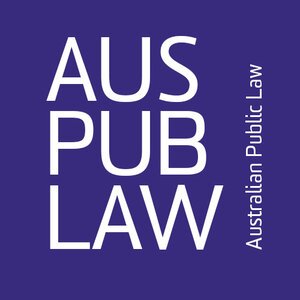
Index
- January 2025 1
- November 2024 5
- October 2024 2
- August 2024 3
- July 2024 2
- June 2024 4
- May 2024 1
- April 2024 5
- March 2024 5
- February 2024 4
- January 2024 2
- December 2023 5
- November 2023 7
- October 2023 4
- September 2023 5
- August 2023 3
- July 2023 5
- June 2023 3
- May 2023 5
- April 2023 3
- March 2023 5
- February 2023 9
- December 2022 9
- November 2022 3
- October 2022 7
- September 2022 4
- August 2022 8
- July 2022 3
- June 2022 4
- May 2022 9
- April 2022 7
- March 2022 2
- February 2022 5
- December 2021 7
- November 2021 12
- October 2021 9
- September 2021 14
- August 2021 9
- July 2021 5
- June 2021 9
- May 2021 4
- April 2021 3
- March 2021 13
- February 2021 7
- December 2020 1
- November 2020 4
- October 2020 4
- September 2020 5
- August 2020 5
- July 2020 8
- June 2020 5
- May 2020 11
- April 2020 6
- March 2020 5
- February 2020 3
- January 2020 1
- December 2019 1
- November 2019 3
- October 2019 2
- September 2019 2
- August 2019 4
- July 2019 2
- June 2019 2
- May 2019 5
- April 2019 8
- March 2019 2
- February 2019 3
- December 2018 1
- November 2018 9
- October 2018 2
- September 2018 5
- August 2018 3
- July 2018 3
- June 2018 2
- May 2018 5
- April 2018 7
- March 2018 3
- February 2018 4
- December 2017 3
- November 2017 7
- October 2017 4
- September 2017 3
- August 2017 3
- July 2017 1
- June 2017 3
- May 2017 2
- April 2017 3
- March 2017 4
- February 2017 3
- January 2017 1
- December 2016 3
- November 2016 4
- October 2016 2
- September 2016 1
- August 2016 3
- July 2016 1
- June 2016 3
- May 2016 3
- April 2016 4
- March 2016 4
- February 2016 3
- January 2016 1
- December 2015 2
- November 2015 4
- October 2015 4
- September 2015 4
- August 2015 3
- July 2015 6
- June 2015 6
15 Votes Later: A Comparative Analysis of the Speakership in Australia and the United States
Dane Luo
In early January, the world watched in disbelief as the US House of Representatives went through vote after vote to elect a Speaker. The chaos stemmed from 19 Republican Representatives (joined later by one more) who rebelled against the House Republican Conference’s pick of Kevin McCarthy for Speaker. Four days and 15 votes later, at the stroke of midnight, McCarthy was elected Speaker.
It begs the question: would such a messy, protracted political battle for the position of Speaker happen in Australia? In short, the answer is no. To demonstrate why, this article will compare and contrast the role, powers, and method of electing the Speaker in these two countries.
Tackling the challenge of legislative complexity
William Isdale and Nicholas Simoes da Silva
In this piece, we build upon a recent post on legislative complexity by Crawford, Akand, Contractor and Sisson to reveal just how big a problem legislative complexity actually is. In doing so, we will explain how a recently launched ALRC initiative — the DataHub — can deliver new insights for scholars interested in probing these issues further. We will also outline some additional answers to a question posed by Crawford and colleagues: “how do we actually simplify legislation?”, drawing on the ALRC’s latest research.
Worth a thousand words? Videos and the implied freedom of political communication in Farm Transparency v NSW
Henry Palmerlee
Justice Gageler’s dissenting judgement in the recent case of Farm Transparency International Ltd v New South Wales [2022] HCA 23 includes an insightful explanation of why video-based political communication has attracted consistent judicial interest. His Honour argued that two unique characteristics of visual imagery – its persuasiveness and inherent veracity – make it a potent medium for political communication in the modern age.
In this piece, I consider Gageler J’s reasoning in the context of recent advances in video manipulation through artificial intelligence, specifically deepfakes.
The landing of the first federal discrimination positive duty: what does this mean for the legal profession?
Somali Cerise and Prabha Nandagopal
On 28 November 2022, the Anti-Discrimination and Human Rights Legislation Amendment (Respect at Work) Bill 2022 was passed by Federal Parliament, heralding a new era for gender equality and the prevention of sexual harassment in Australian workplaces. The key reform introduced by the bill is the highly anticipated positive duty for employers to eliminate discriminatory conduct under the Sex Discrimination Act 1984 (Cth) (Sex Discrimination Act). The positive duty was the cornerstone recommendation in the Australian Human Rights Commission’s Respect@Work Report and will shift the burden away from individuals taking remedial action, instead putting the onus on employers to prioritise early intervention and prevention.
Yes or No?: The Government’s Proposed Changes to Australia’s Referendum Laws
Paul Kildea
In early December 2022 the Albanese government took another important step towards the referendum to constitutionally enshrine a First Nations Voice. It introduced into the House of Representatives the Referendum (Machinery Provisions) Amendment Bill 2022. The Bill proposes numerous changes to referendum process, including new arrangements for public education and campaign finance.
Referendum process usually takes a backseat to substantive debates on constitutional change. That is understandable, but process matters now deserve a place in the spotlight. How Parliament approaches these machinery changes will influence how the public debate and campaign over the Voice unfolds. Getting the process right is essential if the Voice vote is to be fair and informed.
Public Law Events Roundup February 2023
Welcome to the February edition of the AUSPUBLAW Australian Public Law Events Roundup.
‘No reason to believe’: the Governor-General and the Secret Ministries
Ryan Goss
It is said that journalism is the first rough draft of history. In 2022, there have been many first drafts of the history of the Secret Ministries affair. Much has already been written about various aspects of the Secret Ministries. In a thought-provoking forthcoming article in the Australian Law Journal, for example, Fiona Roughley and Megan Caristo explore whether ‘the Constitution contains an implied requirement that any appointment of a person to administer a department of State be made public within a reasonable period’. The release of the Bell Report on 25 November 2022 — and of many of the submissions made to the Bell Inquiry — have added to our knowledge of the events surrounding the Secret Ministries.
Measuring Accountability in Public Governance Regimes book forum - Author’s reply
Ellen Rock
I am very grateful to Dr Anna Olijnyk and Emeritus Professor John McMillan for taking the time to engage so thoughtfully with the arguments I have made in the book, and for their insightful contributions to this book forum. In my reply, I would like to reflect on their comments by reference to perhaps the most high-profile accountability development that has post-dated the publication of this book: the establishment of a National Anti-Corruption Commission. This development has of course been on the agenda for some time, allowing ample opportunity to design an optimal model. The Labor government introduced its long-awaited bill into Parliament in September and has since been passed in an amended form by both Houses. It is clearly too early to predict how effective the ultimate Commission will be as an accountability mechanism. However, informed by the arguments I have made in Measuring Accountability, two key points bear consideration.
Substantive grounds of judicial review: What can Measuring Accountability tell us? Measuring Accountability in Public Governance Regimes book forum
Anna Olijnyk
Ellen Rock pulls off an impressive feat in Measuring Accountability in Public Governance Regimes (‘Measuring Accountability’). The book’s two central insights are, on the one hand, usually overlooked in administrative law scholarship and, on the other, so convincing as to elicit a reaction of ‘yes, of course!’ Rock points out, first, that claims of ‘too much’ or ‘not enough’ accountability make little sense without a normative benchmark of the ideal amount of accountability. Secondly, she argues the existence of an accountability deficit or overload must be assessed at a systemic level, rather than by focusing on single accountability mechanisms in isolation.
In this post, I explore how these insights might shed light on the (non)development of novel grounds of judicial review addressing serious forms of administrative injustice (‘substantive grounds of review’) in Australia.
Evaluating Accountability Outcomes – not easy, but worth trying - Measuring Accountability in Public Governance Regimes book forum
John McMillan
Accountability has become an accustomed concept in our professional and public life.
We are constantly reminded in the workplace that we are accountable for how we discharge functions and the impact of our actions on others. We are equally likely to draw on accountability principles to question the professional conduct of others. A familiar line in daily media stories is that government officials must be held accountable if allegations are substantiated about matters as diverse as Robodebt collection, flood prevention, grant allocation, COVID enforcement, workplace abuse, conflict of interest, privacy breaches, wasteful spending and misleading promises. Those of us engaged in teaching or legal practice are likely to rely on accountability as an overarching norm to explain how public (and private) sector entities and officers should be answerable for what they do.
What more can be said? Dr Ellen Rock dives straight in! While explaining accountability theory both comprehensively and lucidly, she takes the discussion further by focussing valuably on two practical dimensions.
Proportionality and Facts in Constitutional Adjudication book forum - Author’s reply
Anne Carter
I am honoured and humbled to have such an eminent panel engage with my book, Proportionality and Facts in Constitutional Adjudication. As I will explain below, the motivations for this book stemmed in part from my time as a practising government lawyer, so I’m particularly delighted that this book forum includes two practitioners of public law, along with a leading comparative constitutional law scholar. Each panellist has engaged thoughtfully with the substance of the book and has raised a number of distinct issues. In this post I will explain the motivations behind the book and its main themes and findings, as well as responding to the helpful contributions from the three panellists. In doing so I will sketch some future directions about the ongoing conversation about facts in proportionality reasoning (and public law more generally).
The Factual Questions in Legitimacy Testing - Proportionality and Facts in Constitutional Adjudication book forum
Samuel Murray
Dr Anne Carter’s Proportionality and Facts in Constitutional Adjudication is a timely and welcome addition to the perpetually growing commentary concerning the advent of structured proportionality in the High Court’s jurisprudence of the implied freedom of political communication.
As Dr Carter notes throughout the book , a bare majority of the High Court in McCloy v New South Wales (2015) 257 CLR 178 dramatically changed the approach to testing proportionality in respect of the implied freedom by adopting a structured, multi-faceted approach to proportionality testing, effectively in lieu of the prior verbal formulation from Lange v Australian Broadcasting Corporation (1997) 189 CLR 520. given how extensively it changed the approach to the implied freedom. McCloy heralded a new wave of both academic commentary and case-law about the merits and application of the new formulation. This book does an excellent job at building out the former and offering guidance for the latter in respect of the use of facts in the new world of implied freedom proportionality testing.
Challenges for State Parties Engaged in Proportionality Litigation - Proportionality and Facts in Constitutional Adjudication book forum
Mike Wait
Dr Anne Carter’s new book, Proportionality and Facts in Constitutional Adjudication, makes a substantial and timely contribution to our understanding of a range of issues emerging in the burgeoning field of proportionality litigation. The focus of the book is on sources of evidence, burdens of proof and aspects of procedure. However, the book’s real strength is that it locates what are ultimately practical litigious issues within a sophisticated account of the evolution of the implied freedom of political communication in Australia and an appreciation of comparative approaches drawn from jurisdictions which have long wrestled with these issues.
The Art and (Social) Science of Proportionality and Facts in Constitutional Adjudication - Proportionality and Facts in Constitutional Adjudication book forum
Rosalind Dixon
Proportionality analysis is ultimately deeply fact dependent. It depends on an assessment of the suitability of laws for achieving their purposes – a question of basic logic and social fact. It further requires an assessment of whether a law is necessary, or could achieve its objective through some hypothetical, less restrictive alternative, and is 'adequate in the balance', namely achieves greater benefits than costs, from a constitutional perspective.
Anne Carter notes in her important new book that these are all arguably 'legislative' rather than 'adjudicative' facts, but also distinct in nature and scope. As the High Court has indicated, each calls for different sources of evidence, and procedures and rules governing their use. Yet to date, the constitutional law-fact nexus has attracted only limited attention in Australia. Carter’s book therefore makes an important contribution to the literature on this question. It provides a nuanced survey of the procedural challenges and complexities facing the High Court in this context, and offers tentative, well-reasoned potential solutions, informed by comparative experience.
Public Law Events Roundup December 2022
Welcome to the December edition of the AUSPUBLAW Australian Public Law Events Roundup.
Legislative complexity: what is it, how do we measure it, and why does it matter?
Lisa Burton Crawford, Elma Akand, Steefan Contractor and Scott Sisson
The ongoing inquiry of the Australian Law Reform Commission (ALRC) into Financial Services Legislation has cast new light on the complexity of legislation enacted by the Australian Parliament. This post aims to harness some of the ‘significant appetite and impetus for change’ that the ALRC identified with respect to federal financial services legislation for the broader phenomenon legislative complexity — which, we argue, has become systemic. This is demonstrated by data that we collected from the Federal Register of Legislation (FRL).
Confronting Race, Chapter III and Preventive (In)justice: Garlett v Western Australia
Tamara Tulich and Sarah Murray
On 7 September 2022, the High Court handed down its decision in Garlett v Western Australia [2022] HCA 30 (Garlett) upholding, by a 5:2 majority, the validity of item 34 of Sch 1 of Div 1 of the High Risk Serious Offenders Act 2020 (WA) (HRSO Act) on the basis that it did not infringe the principle established in Kable v Director of Public Prosecutions (NSW) [1996] HCA 24 (Kable). The constitutional reasoning of the High Court in Garlett follows the pattern of Vella v Commissioner of Police (NSW) [2019] HCA 38 (Vella) and Minister for Home Affairs v Benbrika [2021] HCA 4 (Benbrika) with Gageler J and Gordon J dissenting from the rest of the Court in relation to the constitutionality of the risk assessment role being conferred on ‘courts of a State’. However, the case also provides important new insights on Chapter III of the Commonwealth Constitution (Ch III) in that a minority of the Court identified a role for the principle established in Chu Kheng Lim v Minister for Immigration, Local Government and Ethnic Affairs [1992] 176 CLR 1 (Lim) beyond the federal court context to state courts and, relatedly, new strands of convergence in Ch III jurisprudence. .
Public Law Events Roundup November 2022
Welcome to the November edition of the AUSPUBLAW Australian Public Law Events Roundup.


















